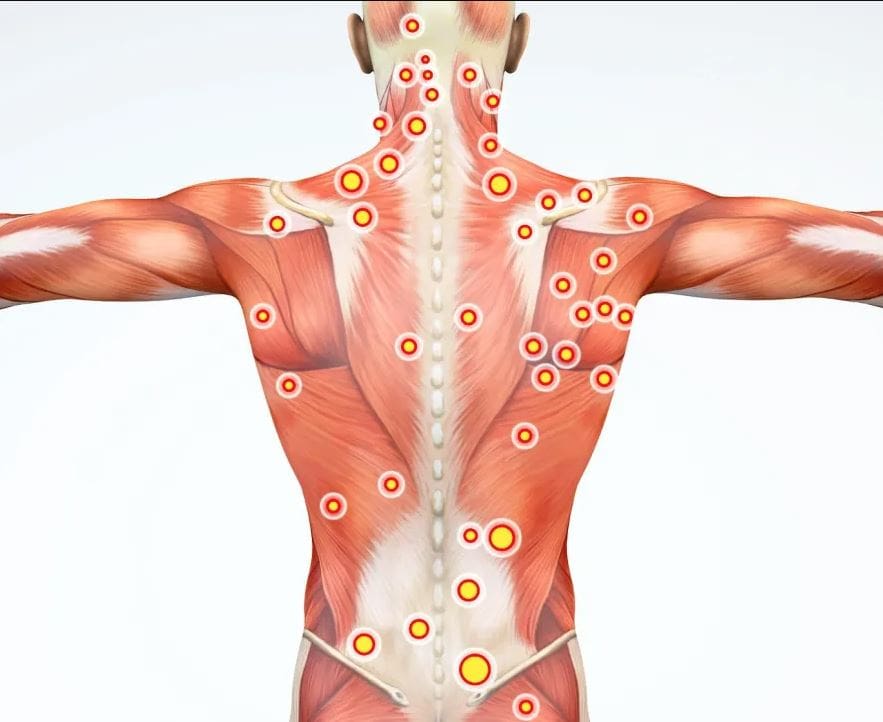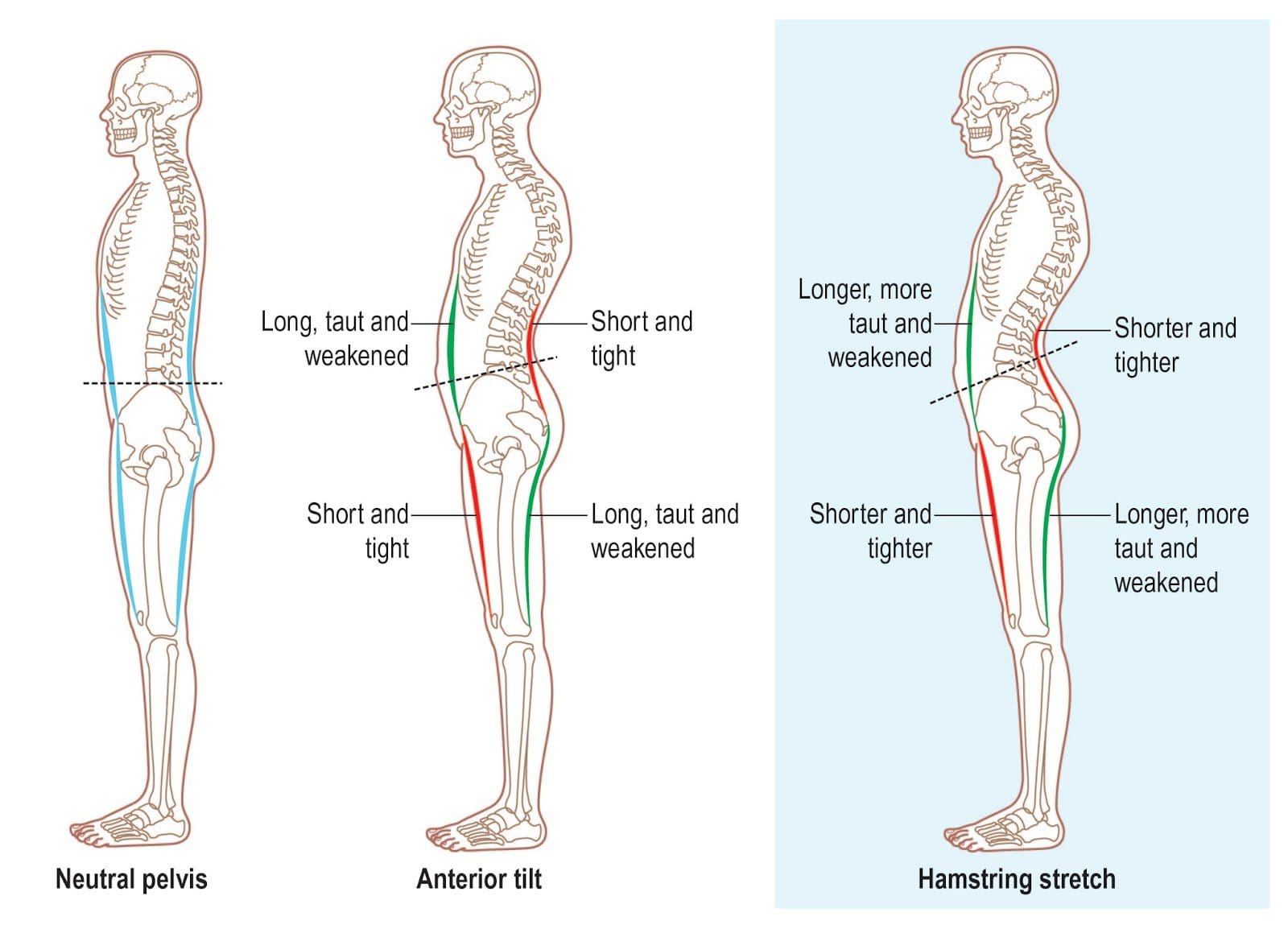Table of Contents
Introduction
When it comes to the body, the various muscles, tissues, joints, and organs provide functionality and movement when it is in motion. Everyone worldwide cares for their bodies by resting them when needed, eating numerous foods to provide energy, and staying active to live longer. However, over time, many factors can contribute to the body by causing many individuals to develop musculoskeletal issues that can affect a person’s posture and the sensory-motor functions that the body provides to maintain motion and stability. In today’s article, we examine muscle imbalances, how it affects the body’s gait pattern, and how the MET technique can help with muscle imbalances. We provide information about our patients to certified medical providers that offer available therapy techniques like MET (muscle energy techniques) for individuals dealing with chronic conditions associated with muscle imbalances that could affect a person’s gait pattern and lead to pain in the muscles and joints. We encourage each patient appropriately by referring them to our associated medical providers based on their diagnosis results. We accept that education is a spectacular way when asking our providers the most crucial questions at the patient’s acknowledgment. Dr. Alex Jimenez, D.C., assesses this information as an educational service. Disclaimer
What Are Muscle Imbalances?
Have you been dealing with tight back, shoulders, and hip muscles? Do you feel one side of your body is weaker than the other? Or do you feel unstable when walking? Many people who are experiencing these issues are associated with muscle imbalances that are affecting their bodies. So what are muscle imbalances, and how does it affect the body? Well, according to “Clinical Applications of Neuromuscular Techniques,” written by Leon Chaitow, N.D, D.O, and Judith Walker DeLany, L.M.T., stated that the soft tissues in our bodies are often changed from their normal elastic, pliable, and toned functional status to short, fibrous and weak function in the different muscle groups. Since the body compensates (without any chronic symptoms) to everyday activities, when the body’s muscles and tissues are exhausted, it can cause the symptoms to develop over time, causing pain, muscle restriction, and limited range of motion to the body. Thus, these symptoms often correlate to musculoskeletal disorders, leading to muscle imbalances.
Other issues that can cause muscle imbalances in the body could result from muscle injuries from traumatic forces. Research studies have revealed that repetitive motions from traumatic injuries could result in microtrauma tears to the muscles and tendons, which can develop into muscle-referred pain and increase the risk of chronic joint inflammation. To that point, it can lead to referred pain in different body areas and affect a person’s stability. When the body is dealing with traumatic injuries that affect the muscles over time, many people shift how they walk or change their postures to compensate for the pain, which can change their gait patterns.
How Does It Affect The Body’s Gait Pattern?
When a person is walking, their entire body is in motion, and over time their posture will change depending on the upper body’s weight bearing down to the hips and lower extremities. Studies reveal that loss of muscle strength can be characterized by musculoskeletal disorders like osteoarthritis that can cause pain symptoms, reduce physical function, decrease range of motion, and muscle/joint instability. So how would muscle imbalances affect the body’s gait pattern? First, we must look at the influences that the neurological and metabolic functions of the central nervous system provide on the musculoskeletal system. The central nervous system sends neuron signals to each muscle group from the upper and lower extremities to allow the individual to walk, run, and do other motor functions. When muscle imbalances are associated with traumatic injuries, it can cause the body to be hunched over over time, causing the short muscles to be tight and the long muscles to be weak. To that point, it can lead to a chain of dysfunctional phases of the gait cycle and its associated symptoms. Some of the signs that can affect a person’s gait pattern include:
- Associated joint restriction on the hips
- Muscle tension on the pelvis and lower extremities
- Muscle tightness in the cervical-thoracic region of the back
- Trigger points on the lower extremities causing referred pain
How Muscle Imbalances Associate With Low Back Pain- Video
Have you been dealing with pain in your joints or muscles? Do you find it difficult to walk or carry heavy objects? Or have you been experiencing tight hips and shoulders? Many of these issues are due to muscle imbalances associated with traumatic injuries. The video above explains how muscle imbalances could be related to low back pain. When environmental factors or traumatic forces begin to affect the muscles and joints in the body, it can change a person’s gait pattern (how they walk) and develop into chronic issues affecting the body. When the muscles are imbalanced and cause gait problems, it can lead to muscle and joint pain associated with poor posture and other chronic conditions. When this happens, it can lead to dysfunctional phases of the gait pattern. Luckily there are many treatments and techniques to reduce pain and restore gait function to the body.
How The MET Technique Help With Muscle Imbalances
Going to therapy treatments to restore muscle functionality, enable the body to recover naturally, and reduce the chances of future injuries to come back. When the body is dealing with muscle imbalances, there are many treatments and techniques that many pain specialists, like chiropractic care that are utilized to restore the body and prevent injuries from re-occurring. One of the techniques is called the MET technique (muscle energy technique). The MET technique is a form of manual therapy that uses isometric stretches to reduce pain in the soft tissues and lengthen weak muscles. Studies reveal that when pain specialists use the MET technique combined with other treatments like physical therapy and spinal manipulation, it can help reduce the pain affecting the muscle fibers while restoring the body to normalcy and lengthening tight muscles. When the MET technique is combined with other forms of therapy, it can help stretch and strengthen the weak muscles and allows the individual to be aware of how their posture is being corrected.
Conclusion
It is important to everyone that different factors and injuries could result from muscle imbalances that can affect your posture. Muscle imbalances in the body can lead to unwanted symptoms of muscle weakness, pain, and dysfunctional gait patterns that correlate with musculoskeletal disorders. Going to therapy treatments and incorporating techniques like MET, physical activities, and chiropractic care can help the body be restored and prevent future injuries from returning and affecting a person’s health and wellness.
References
Chaitow, Leon, and Judith Walker DeLany. Clinical Applications of Neuromuscular Techniques. Churchill Livingstone, 2003.
Joshi, Reema, and Nishita Poojary. “The Effect of Muscle Energy Technique and Posture Correction Exercises on Pain and Function in Patients with Non-Specific Chronic Neck Pain Having Forward Head Posture-a Randomized Controlled Trail.” International Journal of Therapeutic Massage & Bodywork, U.S. National Library of Medicine, 1 June 2022, https://www.ncbi.nlm.nih.gov/pmc/articles/PMC9134480/.
Neme, Jamil R. “Balancing Act: Muscle Imbalance Effects on Musculoskeletal Injuries.” Missouri Medicine, U.S. National Library of Medicine, 2022, https://www.ncbi.nlm.nih.gov/pmc/articles/PMC9324710/.
Vodi?ka, Tomáš, et al. “Could the Evaluation of Muscle Strength Imbalances Be Used as a Predictor of Total Hip Arthroplasty?” International Journal of Environmental Research and Public Health, U.S. National Library of Medicine, 11 May 2021, https://www.ncbi.nlm.nih.gov/pmc/articles/PMC8150769/.
Disclaimer
General Disclaimer
Professional Scope of Practice *
The information herein on "Muscle Imbalances, Gait Patterns, & The MET Technique" is not intended to replace a one-on-one relationship with a qualified health care professional or licensed physician and is not medical advice. We encourage you to make healthcare decisions based on your research and partnership with a qualified healthcare professional.
Blog Information & Scope Discussions
Welcome to El Paso's Premier Wellness and Injury Care Clinic & Wellness Blog, where Dr. Alex Jimenez, DC, FNP-C, a Multi-State board-certified Family Practice Nurse Practitioner (FNP-BC) and Chiropractor (DC), presents insights on how our multidisciplinary team is dedicated to holistic healing and personalized care. Our practice aligns with evidence-based treatment protocols inspired by integrative medicine principles, similar to those found on this site and our family practice-based chiromed.com site, focusing on restoring health naturally for patients of all ages.
Our areas of multidisciplinary practice include Wellness & Nutrition, Chronic Pain, Personal Injury, Auto Accident Care, Work Injuries, Back Injury, Low Back Pain, Neck Pain, Migraine Headaches, Sports Injuries, Severe Sciatica, Scoliosis, Complex Herniated Discs, Fibromyalgia, Chronic Pain, Complex Injuries, Stress Management, Functional Medicine Treatments, and in-scope care protocols.
Our information scope is multidisciplinary, focusing on musculoskeletal and physical medicine, wellness, contributing etiological viscerosomatic disturbances within clinical presentations, associated somato-visceral reflex clinical dynamics, subluxation complexes, sensitive health issues, and functional medicine articles, topics, and discussions.
We provide and present clinical collaboration with specialists from various disciplines. Each specialist is governed by their professional scope of practice and their jurisdiction of licensure. We use functional health & wellness protocols to treat and support care for musculoskeletal injuries or disorders.
Our videos, posts, topics, and insights address clinical matters and issues that are directly or indirectly related to our clinical scope of practice.
Our office has made a reasonable effort to provide supportive citations and has identified relevant research studies that support our posts. We provide copies of supporting research studies upon request to regulatory boards and the public.
We understand that we cover matters that require an additional explanation of how they may assist in a particular care plan or treatment protocol; therefore, to discuss the subject matter above further, please feel free to ask Dr. Alex Jimenez, DC, APRN, FNP-BC, or contact us at 915-850-0900.
We are here to help you and your family.
Blessings
Dr. Alex Jimenez DC, MSACP, APRN, FNP-BC*, CCST, IFMCP, CFMP, ATN
email: coach@elpasofunctionalmedicine.com
Multidisciplinary Licensing & Board Certifications:
Licensed as a Doctor of Chiropractic (DC) in Texas & New Mexico*
Texas DC License #: TX5807, Verified: TX5807
New Mexico DC License #: NM-DC2182, Verified: NM-DC2182
Multi-State Advanced Practice Registered Nurse (APRN*) in Texas & Multistate
Multistate Compact RN License by Endorsement (42 States)
Texas APRN License #: 1191402, Verified: 1191402 *
Florida APRN License #: 11043890, Verified: APRN11043890 *
* Prescriptive Authority Authorized
ANCC FNP-BC: Board Certified Nurse Practitioner*
Compact Status: Multi-State License: Authorized to Practice in 40 States*
Graduate with Honors: ICHS: MSN-FNP (Family Nurse Practitioner Program)
Degree Granted. Master's in Family Practice MSN Diploma (Cum Laude)
Dr. Alex Jimenez, DC, APRN, FNP-BC*, CFMP, IFMCP, ATN, CCST
My Digital Business Card
RN: Registered Nurse
APRNP: Advanced Practice Registered Nurse
FNP: Family Practice Specialization
DC: Doctor of Chiropractic
CFMP: Certified Functional Medicine Provider
MSN-FNP: Master of Science in Family Practice Medicine
MSACP: Master of Science in Advanced Clinical Practice
IFMCP: Institute of Functional Medicine
CCST: Certified Chiropractic Spinal Trauma
ATN: Advanced Translational Neutrogenomics






















